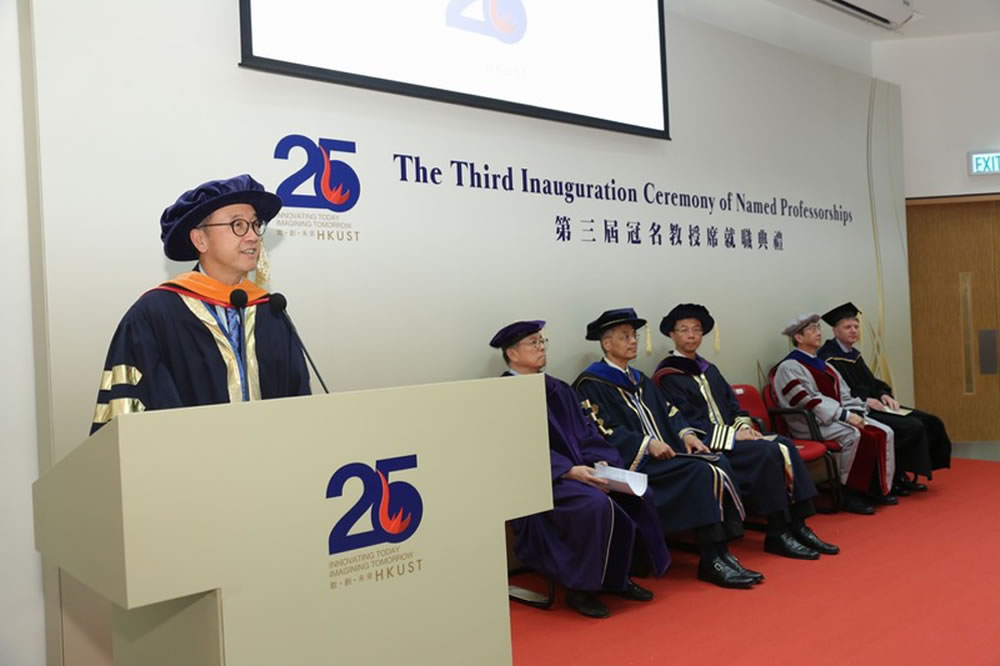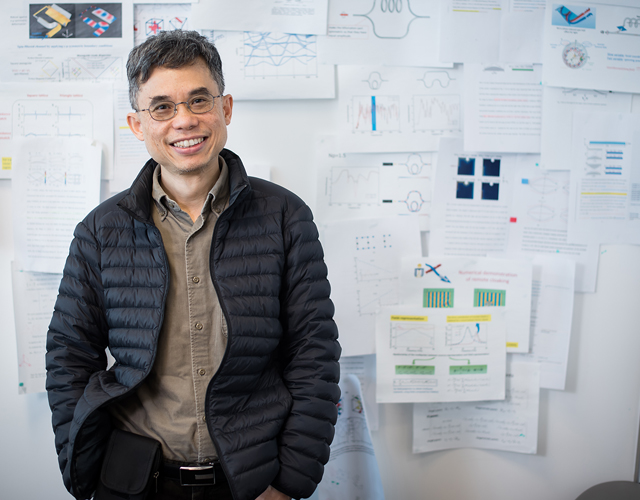Associate Vice-President for Research and Development (Research)
Prof. Che Ting Chan spends his days finding answers to all those questions that fascinated him about natural phenomena when he was a small child. His curiosity has led to major discoveries, including that light can be used to attract objects and Harry Potter’s invisible cloak is not fiction.
Creating materials that go beyond nature to control light and sound is currently the major focus of his work. For example, it is known that light can push objects through momentum transfer, even though light has no mass, but can it also pull objects? Examination of the physics equations relating to light show him that nowhere did it indicate that this was not possible, leading him and his team to examine under what circumstances this can occur. Similarly, he has proved that metamaterials can manipulate light and waves and make items invisible, or turn the appearance of one object into that of another – hence the truth of the invisible cloak.
Prof. Chan was raised in Hong Kong, and studied for his BSc at University of Hong Kong in 1980. He has seen many changes in the local academic environment since those days, not least the establishment of HKUST, and a much more research-driven and collaborative atmosphere. HKUST in particular provides him with the ideal platform for his method of curiosity-driven research. As a theorist, he also benefits from collaborations that allow him to work closely with experimentalists in bringing his theories to life.
Teaching, however, is also important to him: he is a recipient of the Michael Gale Medal for Distinguished Teaching at HKUST. He also enjoys sharing his enthusiasm for science with secondary school students – especially talking about science in movies, illustrated with examples from Harry Potter and Star Trek, amongst others.
Prof. Chan received his PhD from University of California at Berkeley in 1985. He is a fellow of the Electromagnetics Academy and American Physical Society; his awards include Senior Research Fellowship by the Croucher Foundation.














